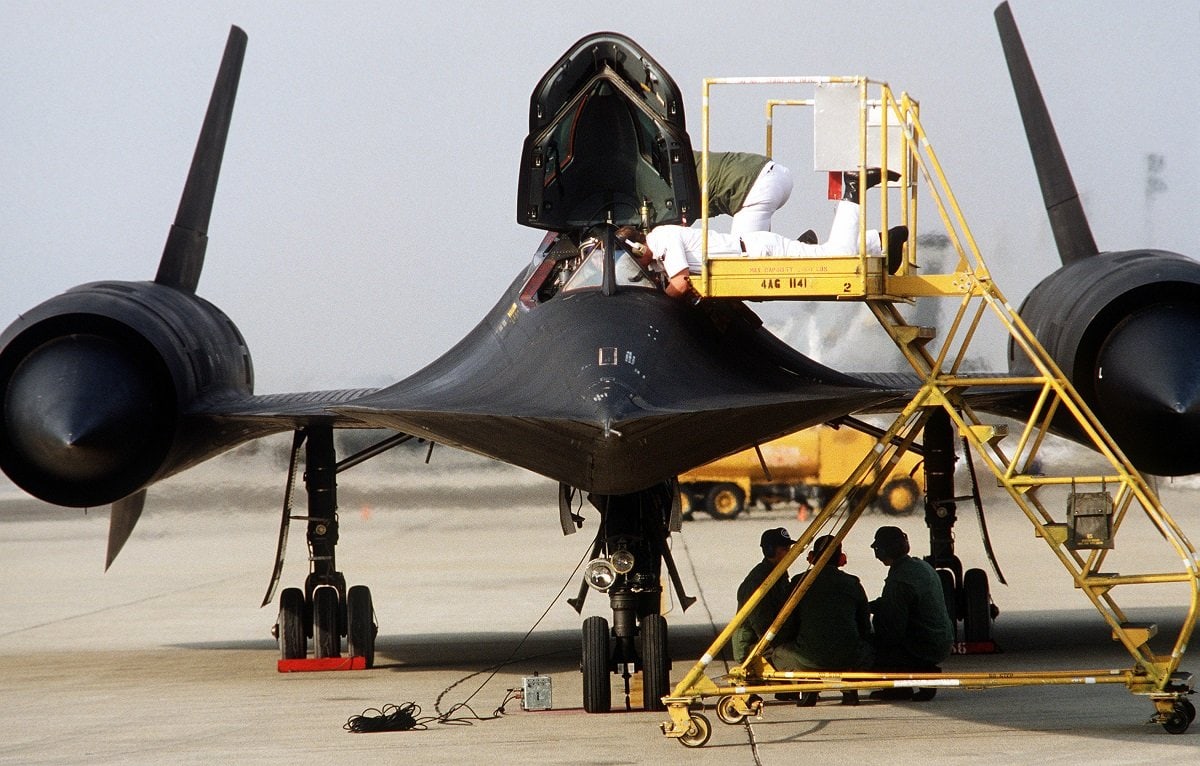The Lockheed SR-71 spy plane was – and still is – the fastest plane on the planet.
The Goal
Known unofficially as the “Blackbird” for its black paint job, which was developed to dissipate heat, the jet featured sleek lines that certainly were “futuristic” when it was flying top secret missions years before American astronauts headed to the moon.
It was developed in secret in the late 1950s to cruise to 80,000 feet above the earth, near the edge of space, and out fly any missile that was launched at it.
The Blackbird, which first took flight in 1964, could enter hostile airspace, take photographs from those extreme heights like a tourist on vacation and still be on its way before an enemy had a chance to even take a shot at it. While it could cross continents in just a few hours, the aircraft also flew so high that pilots navigating by sight couldn’t rely on ground features such as roads and instead needed to look at the mountains, rivers, and major coastlines to get their bearings.
The History
The aircraft was born out of the Lockheed “Skunk Works,” which had a proven track record to deliver “impossible” technologies on an incredibly short, but strategically critical deadline. The Central Intelligence Agency (CIA) and United States Air Force called for a new plane that could operate at extreme altitudes, speeds, and temperatures. However, that meant that everything from the tires, oil, fuel, and even paint had to be created from the ground up.
The SR-71 project was headed up by Kelly Johnson, one of the preeminent aircraft designers of the twentieth century, who suggested, “Everything had to be invented. Everything.”
While other aircraft of the era could in theory reach speeds of 2,000 mph only in short, after-burner-driven bursts, the SR-71 needed to maintain the record-setting speed for hours at a time. The designers knew that at such velocity and friction with the atmosphere would generate temperatures that could melt a conventional airframe. As a result, the aircraft received that iconic black paint. The paint could absorb the heat and in the process gave the plane that unofficial nickname, “Blackbird.”
Additionally, titanium alloy – which provided the strength of steel but at a relatively lightweight – was utilized for the airframe. Along with its low weight, titanium was the only material that could provide durability at excessive temperatures. One issue was that the metal could be brittle if mishandled, which meant that even new tools had to be designed and fabricated. And those too were made from titanium.
During its twenty-four-year career, the SR-71 remained the world’s fastest and highest-flying operational aircraft in the world. At 80,000 feet, the Blackbird could survey 100,000 square miles of the ground below per hour. In July 1976, an SR-71 even set two world records – one was an absolute speed record of 2,193.167 mph while the other was an absolute altitude record of 85,068.997 feet.
As the Smithsonian’s Air & Space Museum noted, no other reconnaissance aircraft in the world operated globally in more hostile airspace or with such impunity as the SR-71. The world’s fastest jet-propelled aircraft’s performance and operational achievements also placed it at the very pinnacle of aviation technology.
Peter Suciu is a Michigan-based writer who has contributed to more than four dozen magazines, newspapers and websites. He regularly writes about military small arms, and is the author of several books on military headgear including A Gallery of Military Headdress, which is available on Amazon.com.

